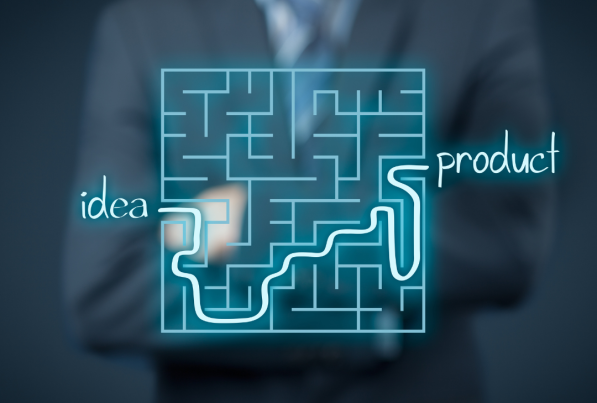Introduction
When smartphones and tablets have become ubiquitous, the demand for innovative and user-friendly mobile applications is ever-growing. Whether it’s for entertainment, productivity, communication, or business, mobile apps have revolutionized the way we interact with technology. However, behind every successful app lies a well-thought-out and meticulously executed software development process.
In this comprehensive guide, we’ll search into the journey from conception to deployment, unraveling the intricate steps involved in bringing an idea to life as a fully functional app.
Ideation and Conceptualization
Every app begins with an idea – a solution to a problem, a novel concept, or an improvement upon existing applications. During the ideation phase, brainstorming sessions, market research, and feasibility studies play a crucial role in shaping the app’s concept. Identifying the target audience, defining key features, and establishing the app’s unique value proposition are essential steps in refining the idea and laying the groundwork for development. The beauty of ideation and conceptualization lies in their limitless potential to inspire and innovate. They empower individuals and teams to think outside the box, challenge the status quo, and push the boundaries of what’s possible.
Whether you’re a creative professional, an entrepreneur, or simply someone with a passion for innovation, embracing the art of ideation and conceptualization can unlock new realms of possibility and pave the way for transformative change. So dare to dream, dare to explore, and dare to bring your ideas to life – the world is waiting for your next big breakthrough.

Once the concept is fleshed out, the next step is to visualize the app’s structure and layout through wireframing and prototyping. Wireframes serve as blueprints, outlining the app’s navigation flow, user interface elements, and screen interactions. Prototypes, on the other hand, provide a simulated experience of the app’s functionality, allowing stakeholders to preview and iterate on the design before development begins. This iterative process helps refine the user experience (UX) and ensures alignment with the original vision. Prototyping takes wireframing a step further by adding interactivity and functionality to the design.
Prototypes allow designers to simulate user interactions, test functionalities, and gather feedback early in the development process. Whether it’s a clickable mockup of a mobile app or an interactive prototype of a website, prototyping helps identify potential issues and refine the user experience before investing significant resources into development. Together, wireframing and prototyping empower designers to iterate quickly, validate ideas, and ensure that the final product meets user needs effectively. By incorporating these techniques into the design process, teams can minimize risks, streamline development, and ultimately deliver more successful and user-friendly products.
Development Planning
With a solid concept and design in place, the development team embarks on planning the implementation phase. This involves breaking down the project into smaller tasks, estimating timeframes, and allocating resources accordingly. Choosing the right development methodology – whether Agile, Waterfall, or a hybrid approach – depends on factors such as project complexity, timeline, and team dynamics. Clear communication, collaboration, and project management tools are essential for keeping the development process organized and on track. At its core, development planning encapsulates a holistic approach, integrating economic, social, environmental, and political considerations. It’s about understanding the needs, aspirations, and challenges of stakeholders and charting a course that optimizes resources while balancing competing interests.

The process begins with thorough analysis and assessment, delving into current realities and future trends. This diagnostic phase illuminates opportunities and identifies barriers, laying the foundation for informed decision-making. From there, goals are set, delineating the desired outcomes and the pathways to achieve them. Crucially, development planning is not a static endeavor but a dynamic one, adaptable to evolving circumstances and feedback. Flexibility and agility are paramount, enabling adjustments as new insights emerge or external factors shift. Moreover, successful development planning fosters inclusivity and participation, ensuring that the voices of all stakeholders are heard and valued. Collaboration becomes key, forging partnerships across sectors and fostering synergy toward shared objectives.
Frontend and Backend Development
Frontend development focuses on creating the visual interface and user-facing features of the app. Using programming languages like HTML, CSS, and JavaScript, developers bring the wireframes to life, ensuring responsiveness across different devices and screen sizes. Meanwhile, backend development involves building the server-side infrastructure, databases, and APIs that power the app’s functionality. Technologies such as Node.js, Django, and Ruby on Rails are commonly used for backend development, enabling seamless data management and communication between the client and server.
While frontend development focuses on the user interface and experience, backend development handles the server-side operations and data management. Both are essential for creating dynamic, feature-rich web solutions that meet the demands of modern users. Collaboration between frontend and backend developers is crucial for aligning design with functionality, ensuring seamless integration, and delivering an exceptional end product.
Quality Assurance and Testing
Testing is a critical phase in the software development lifecycle, ensuring that the app meets quality standards and performs as intended. Quality assurance (QA) engineers conduct various tests, including functional testing, usability testing, performance testing, and security testing, to identify and address any bugs or issues. Automated testing tools and frameworks streamline the testing process, allowing for efficient regression testing and continuous integration (CI) / continuous delivery (CD) pipelines. Rigorous testing helps enhance the app’s stability, reliability, and user satisfaction.
Testing, on the other hand, is the hands-on validation of software to identify bugs, glitches, and areas for improvement. It encompasses a variety of techniques, including functional testing, performance testing, and usability testing, each tailored to uncover different aspects of a software’s functionality and user experience.
Together, QA and Testing form an inseparable duo, working in tandem to ensure that software not only meets but exceeds user expectations. They act as gatekeepers, safeguarding against potential pitfalls and ensuring that only the highest quality products make their way to end-users.

In today’s hyper-competitive market, where user experience reigns supreme, investing in robust Quality Assurance and Testing processes is no longer optional but essential. By prioritizing quality from the outset, companies can mitigate risks, enhance customer satisfaction, and ultimately, carve a path towards sustained success in the ever-evolving landscape of software development.
Deployment and Release
After thorough testing and debugging, the app is ready for deployment to the intended platform – whether it’s the Apple App Store, Google Play Store, or enterprise distribution channels. Submission guidelines, app store policies, and compatibility requirements must be adhered to during the deployment process. Once the app is approved and published, continuous monitoring and updates are essential to address user feedback, fix bugs, and introduce new features. App analytics and user feedback tools provide valuable insights into user behavior and preferences, enabling data-driven decision-making for future iterations.
Deployment marks the transition of a developed application or feature from a testing environment to a production environment. It involves the installation, configuration, and activation of the software on servers or devices where end-users can access it. This phase requires meticulous attention to detail to ensure that the deployment process is smooth and error-free. Release, on the other hand, is the moment when the software becomes available to end-users. It signifies the culmination of development efforts and represents a milestone in the product’s journey. A successful release involves not only making the software accessible but also effectively communicating its features, updates, and benefits to the target audience.
Conclusion
The journey from idea to app is a complicated process that requires collaboration, creativity, and technical expertise at every stage. By understanding the software development process and its intricacies, entrepreneurs, startups, and businesses can navigate the complexities of app development more effectively. From ideation and design to development and deployment, each phase contributes to the realization of a successful and impactful app that meets the needs and expectations of its users. With innovation and perseverance, the possibilities for creating transformative mobile experiences are endless in today’s dynamic digital landscape.
Related Posts





